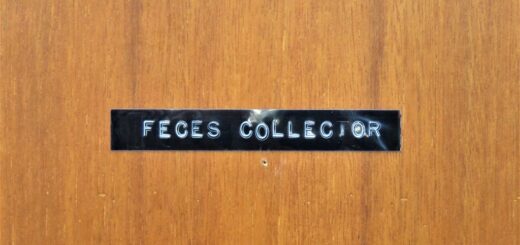Dinesh D’Souza Reveals His Problem
Ben Shapiro is basically Rush Limbaugh for smug millennials, which is to say a moderately clever profiteer of the Republican establishment, but one who substitutes snotty rich boy arrogance and snide self-certainty for Limbaugh’s everyman persona, playful wit, and self-deflating vanity. Dinesh D’Souza is a less clever and less circumspect version of Shapiro; he doesn’t know how to hedge his bets against future shifts in audience temperature as Shapiro does, and he lacks the quickness on his feet characteristic of Shapiro’s high school debate champion schtick.
Shapiro, having put his finger to the wind of Republican reaction to D’Souza’s election fraud documentary 2000 Mules, has decided to distance himself somewhat from its conclusions. From what I have read — I can’t take even a minute of Shapiro’s obnoxious self-importance and vocal rat-a-tat, so I rely on printed reproductions — he has thrown cold water on the movie’s essential claims for lack of convincing evidence, especially regarding D’Souza’s irresponsible inference from a few video clips and some cell phone tracking data to four hundred thousand illegal votes that completely reversed the 2020 election results in several states. But the details of Shapiro’s critique are not the point here, since as usual he is merely saying what others have said better. What interests me in this little intramural scuffle is the manner of D’Souza’s response to Shapiro’s questions.
Specifically, Shapiro notes that showing one surveillance video of a person depositing multiple ballots into an early voting box, and then matching that with phone tracking data indicating that the same person appears to have been close to several other ballot boxes within a similar time frame, does not prove convincingly that this person was in fact distributing ballots into all of those boxes. In short, where is the knockdown video evidence to support these 2000 “mule” allegations? D’Souza’s response is two-fold, with both folds revealing his vested interests and his lack of seriousness.
First of all, he argues that Shapiro’s demand for more video of the same perpetrators at different boxes is unrealistic, since many districts did not use surveillance cameras, or did not have them turned on, during the times in question. But that argument is equivalent to telling a judge, “No, I can’t provide any damning evidence, but that’s only because there isn’t any.” Um, yes, that’s the whole point, Dinesh. If you can’t provide more than some suspicious data and inferred coincidences, then how can you expect anyone to join you in leaping to allegations of massive election fraud?
Secondly, and more tellingly, D’Souza offers this rejoinder to Shapiro’s demand for something better than vague circumstantial evidence:
“It seems to me what Ben Shapiro is kind of asking for is unreasonable,” the filmmaker said. “It’s kind of like saying, ‘you got a serial killer. he went to five different homes and committed murder. He left his [digital] DNA at all them. We have DNA. We know he was there’ and Ben’s like, ‘wait a minute, I don’t see video of him in all five homes.’”
No, actually, that is not “kind of like” what Shapiro is saying at all. But the manner of D’Souza’s misrepresentation pretty much blows the lid off his complete lack of objectivity and investigative logic regarding his own evidence. Notice the way he frames his analogy: “You got a serial killer.” But wait a moment. That is assuming exactly what would need to be proved. In order for you to know, before judging the evidence of the criminal’s movements, that what you are looking at is a serial killer, you must already have determined that five people were in fact murdered by the same individual — in other words, you must already know for certain that murders were committed, that five people are dead and the cause is homicide. In this analogy, the five homicide victims are equivalent to what? To massive election fraud having taken place.
In other words, D’Souza — not Shapiro, but only D’Souza — is assuming from the outset that massive, result-reversing voter fraud did occur. He therefore proceeds to examine his evidence from the presupposition that all he has to do is explain how the fraud was perpetrated, not that it was perpetrated. Thus he can argue, as per his analogy, that the mere fact that the man in question “left his DNA” in “five different homes,” so that “we know he was there,” is sufficiently damning to convince us that this man is the murderer. But this inference is only convincing, or even semi-rational, if we already know in advance of the DNA evidence that murders were indeed committed in those five homes. And that is exactly what D’Souza, like his leash-holder Donald Trump, has simply asserted, but utterly failed to establish.
To recycle D’Souza’s analogy in a manner more true to the actual case he is trying to explain, imagine this scenario: You see surveillance camera footage of a man exiting a luxury home which appears not to be his own. You then track this man’s phone data and notice that within a few days of that video evidence, the same man appears to have been at or very near four other luxury homes around the area, though you do not know whether he entered, or even stopped at, any of those other homes. You decide, based on this evidence, and on your sense that someone might try to murder a rich person, that the man in question is a serial killer — though you have no independent proof that anyone was actually murdered in any of those homes.
D’Souza presents visual evidence suggesting some sort of chicanery regarding envelopes being deposited into vote boxes, and some digital phone tracking records suggesting that some of the individuals in the surveillance videos were close to other vote boxes in the area. From this he leaps to the conclusion that he has unmasked the scheme whereby hundreds of thousands of illegal votes were cast, because he has begun with the presupposition that hundreds of thousands of illegal votes were cast, and that everyone already knows that.
I don’t know that. Ben Shapiro, I suspect, is more or less saying that he doesn’t know it either. That the election was stolen is not the working presumption in this case. On the contrary, it is what D’Souza and his ilk must prove. Not only is he failing to prove it, but as his ill-conceived serial killer analogy establishes, he is not even aware that this is what he must prove, and what he has utterly failed to prove. D’Souza’s analogy reveals the flaw in all these flimsy conspiracy theories from the Trumpist alt-right: If you begin with the assumption of a grand and evil scheme having been perpetrated, such that all you have to do is show how it was perpetrated, then every bit of circumstantial or partial “evidence” can easily be mistaken for a knockdown argument. But unless you have the dead bodies, or the missing person reports for those five people in the neighborhood, what grounds do you have for assuming that anyone was murdered at all? In other words, perhaps the man in the video leaving that luxury home in the middle of the night was up to no good, but you need a lot more than that to leap to the conclusion that he is a murderer. You need a dead body. In the case of the 2020 election, you need proof of largescale fake ballots having been counted for Biden. D’Souza is not even attempting to prove that, but merely assuming it from the outset.
On a side note, I see that there was indeed a little ballot harvesting scandal in Pennsylvania recently — involving a Republican political action committee. As I asked in my original comments on D’Souza’s movie, how does he know all those “harvested” ballots from 2020 that he believes he has found were Biden votes? The answer, of course, is that he does not.


